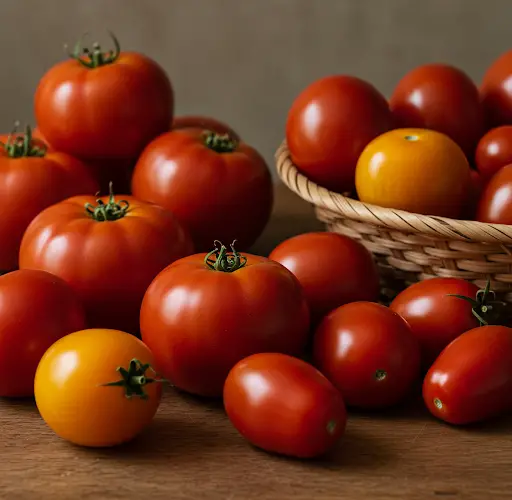Homemade Tomato Fertilizers: Natural Ways to Feed Your Plants for a Bountiful Harvest
There’s nothing quite like the taste of homegrown tomatoes. Whether sliced in sandwiches, tossed into salads, or simmered into sauces, tomatoes are one of the most versatile and rewarding crops to grow in any vegetable garden. However, tomatoes are heavy feeders, which means they require a steady supply of nutrients to produce juicy, flavorful fruits throughout the season.
While commercial tomato fertilizers are widely available, many gardeners prefer to use homemade options. They’re cost-effective, natural, and contribute to a more sustainable, organic garden. Here are five powerful homemade tomato fertilizers made from everyday kitchen scraps and natural materials that can help you grow healthy, productive tomato plants.
1. Banana Peels
Banana peels are one of the best natural fertilizers for tomato plants. They’re rich in essential nutrients like potassium, magnesium, phosphorus, and calcium—all crucial for tomato development. Interestingly, banana peels are low in nitrogen, which makes them especially suitable for the fruiting stage of tomato growth, when too much nitrogen can encourage leafy growth over fruit production.
There are two simple ways to use banana peels in your garden:
-
Chop and Bury: Cut the peels into small pieces and bury them around the base of your tomato plants or mix them into the planting hole. This helps the peels decompose faster and release nutrients gradually into the soil.
-
Banana Peel Tea: Soak banana peels in water for several days to create a potassium-rich liquid fertilizer. Strain the mixture and pour the liquid around the base of the plants for an instant nutrient boost.
2. Vegetable Peelings
Kitchen vegetable scraps are often discarded, but they’re actually full of nutrients like nitrogen, potassium, and phosphorus. While they’re commonly added to compost heaps, you can also use them directly in the garden to nourish tomato plants.
Here are two effective methods:
-
In-Soil Fertilizer: Bury vegetable peelings in the tomato planting holes a few months before transplanting. This allows time for the materials to break down and enrich the soil naturally.
-
Vegetable Peeling Tea: For a quicker approach, soak your peelings in water for one to two days to extract the nutrients. Strain the liquid and apply it to the soil around your tomato plants. This method delivers nutrients more quickly and can be repeated every couple of weeks during the growing season.
3. Cooking Water
The water left over from boiling vegetables, pasta, or rice is surprisingly nutrient-rich. As these foods cook, minerals like phosphorus, nitrogen, iron, and calcium leach into the water. Instead of pouring it down the drain, let the water cool and use it to water your tomato plants.
Important Tip: Always ensure the cooking water is unsalted. Salt can damage plant roots and lead to dehydration or nutrient imbalances in the soil. Used properly, this method provides a gentle and natural nutrient top-up that supports healthy plant development.
4. Onion Peels
The dry outer skins of onions—often thrown away—are full of nutrients, particularly potassium and calcium. These nutrients are vital for strengthening plant cell walls and improving overall plant resilience.
You can use onion peels in two ways:
-
Powdered Application: Dry the peels completely, grind them into a powder, and sprinkle it directly into the soil around your tomato plants.
-
Onion Peel Tea: Soak the peels in water for up to a week, then strain the mixture and use the liquid as a fertilizer. This solution is especially useful during the flowering and fruiting stages when potassium demand is highest.
5. Epsom Salt
Epsom salt (magnesium sulfate) is a popular natural supplement for tomatoes. Magnesium is essential for chlorophyll production and aids in photosynthesis, while sulfur supports enzyme function and plant metabolism.
Tomatoes can benefit from magnesium, but overuse of Epsom salt can disrupt soil balance. It’s best to test your soil first or use Epsom salt only when deficiency symptoms—like yellowing leaves between veins—are present.
Application Tips:
-
Soil Drench: Mix 1 tablespoon of Epsom salt per gallon of water. Use this solution to water your tomato plants at the time of planting and then once a month if needed.
-
Foliar Spray: Dissolve the same amount in water and spray directly onto the leaves for faster absorption, especially if symptoms of magnesium deficiency are visible.
A Sustainable Approach to Fertilizing Tomatoes
These homemade fertilizers not only help nourish your tomato plants but also reduce kitchen waste and reliance on synthetic products. By using materials you already have at home—banana peels, vegetable scraps, onion skins, and more—you can create a nutrient-rich environment that encourages robust plant growth and abundant fruiting.
With the right feeding schedule and a little care, your tomato plants will reward you with plump, flavorful fruits throughout the season. Plus, knowing that your harvest came from natural, homemade inputs makes it all the more satisfying.



